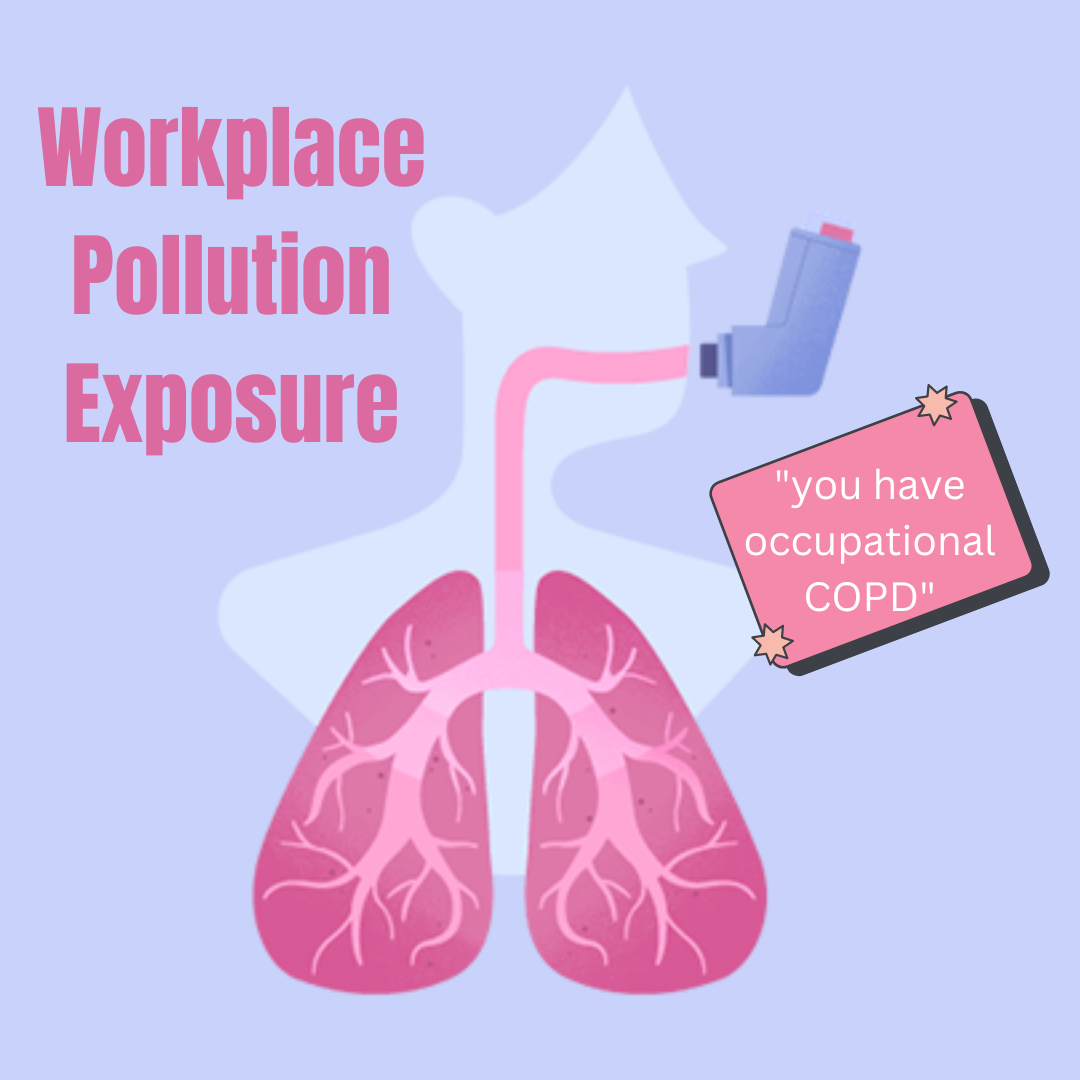When people hear the words “you have COPD”, the individual may automatically assume it was caused by smoking or second-hand smoke. However, not all cases of COPD are due to smoking. We should also consider the workplace as being a potential cause of a COPD diagnosis. Even though smoking is one of the main risk factors; chemicals, gases, fumes, and many other workplace pollutants are also risk factors when it comes to chronic obstructive pulmonary disease.
COPD due to the workplace is often called occupational COPD. This diagnosis is usually hard to diagnose as there can be other factors that may have led to someone’s COPD diagnosis. Early diagnosis is important as it can aid in the prevention of declining lung function. When someone is diagnosed with COPD the airways in the lungs begin to become swollen which causes mucus. The mucus will begin to clog the flow of air when breathing.
Chronic obstructive pulmonary disease (COPD) is a common disease that is explained by the limitation of airflow and chronic respiratory symptoms such as bronchitis and emphysema. It is said that as someone ages, the chances of a COPD diagnosis become higher. A case of COPD can progress quickly in a matter of months, this is why it is important to be proactive in the prevention of the disease. This disease is said to be preventable by The Global Initiative for Obstructive Lung Disease (GOLD).
With Occupational COPD, many patients are first diagnosed with chronic bronchitis that becomes COPD further through the diagnosis. COPD is considered an underdiagnosed disease. The lack of awareness has been a targeted problem with patients diagnosed with occupational COPD.
Symptoms to be aware of include:
- Excessive coughing with phlegm
- Wheezing
- Struggling to breathe
- Exhaustion
- Heavy Chest
There are many public health programs stepping up to help reduce the exposure of occupational COPD, however the exposure to dusts and any other chemicals starts with companies and their prevention policies. As an employer, there are steps to improve or change what is happening in your workplace.
- Evaluate all reports of COPD-related health data
- Research and engage all prevention strategies there may be for improving the understanding of the development of COPD
- Bring awareness to decision makers on changes needed in the environment
- Put policies in place for COPD-related concerns and issues
Some policies and programs that have been increased across the world for occupational COPD are smoke-free policies, air quality assurance policies, screening programs for employees for active prevention, and many more. In modern day, many places of employment have procedures set in place to minimize the risks of COPD.
Things to do to keep your risks lower:
- Stay active
- Minimize exposure to smoke inhalation
- Become educated about chronic obstructive pulmonary disease
- Maintain a healthy lifestyle
If you have been diagnosed with chronic obstructive pulmonary disease (COPD) or believe you may have symptoms of COPD, learn more about BTC of New Bedford’s clinical trial to see if you could be a potential participant in an enrolling study.

